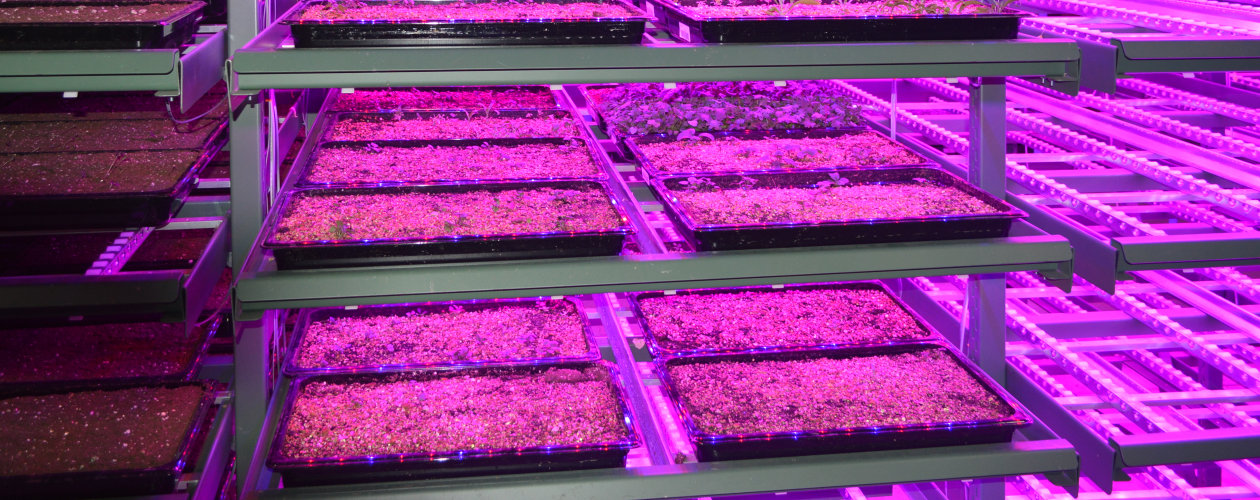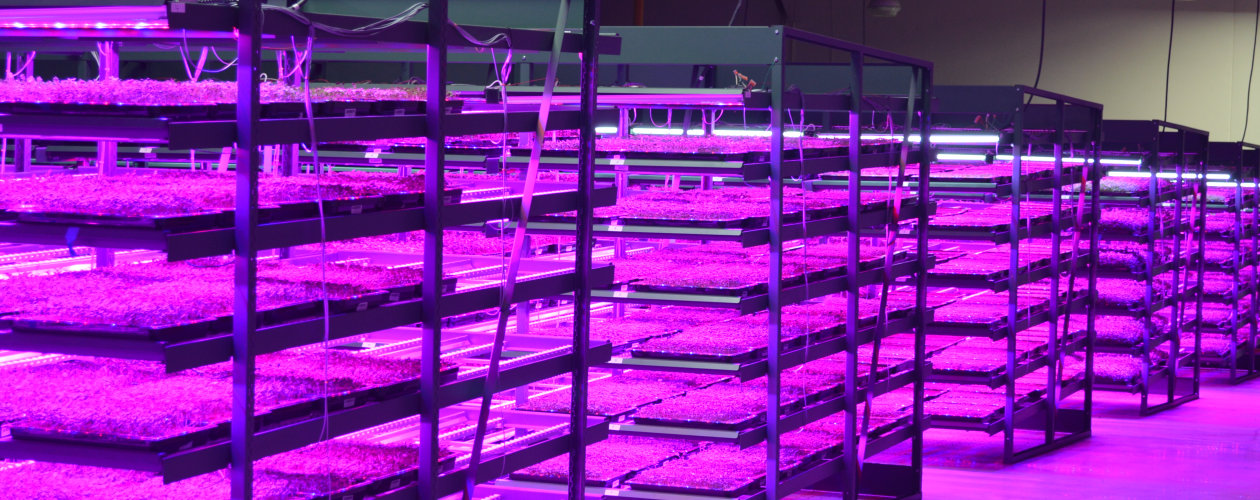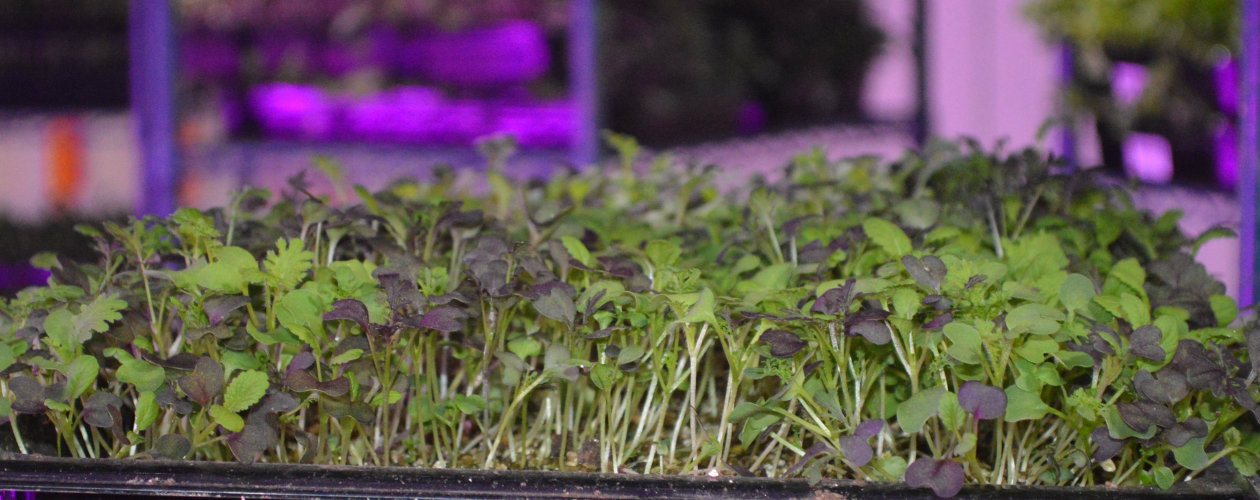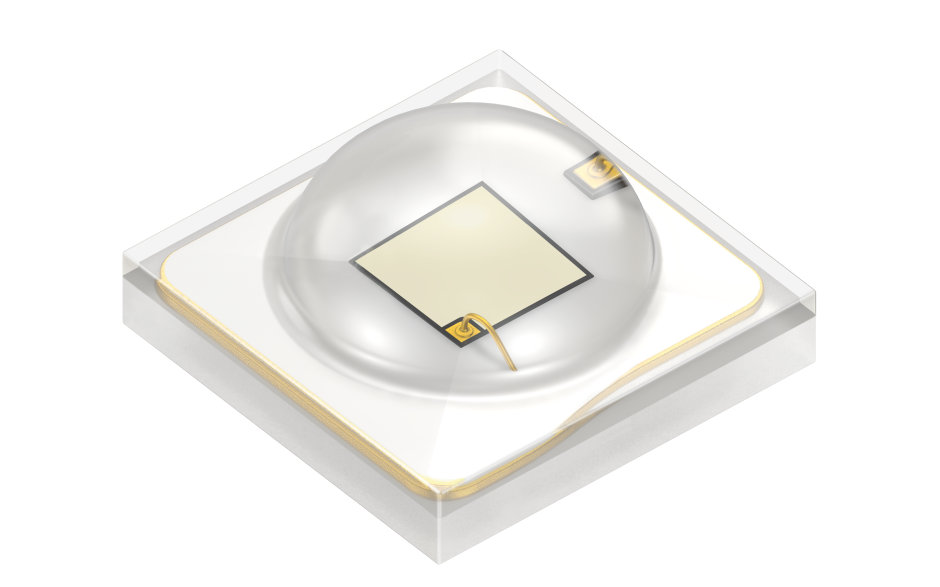Osram Lights the Way to Better Food at Vertical Farm
San Francisco, California, USA, Sep. 2018:
Vertical farms like FarmEcology operate indoors where LED lighting can have a major effect on plant growth. FarmEcology uses more than 50,000 Oslon SSL LEDs to grow some of the best microgreens in the area. Osram’s 660 nm (hyper red) and 450 nm (deep blue) LED components offer top-notch technology, while using the least amount of energy.
Details:
Category: Horticulture
Location: Sunnyvale, USA
Technology/Services:
LED components
Year: 2018
The growing of fruits and vegetables is evolving with new digital and lighting technologies that help growers optimize crop yields and enable farms to sprout almost anywhere.
In fact, high-tech, vertical farms are springing up in many metro areas, growing produce in warehouse-like facilities powered by smart lighting, sensor systems and artificial intelligence.
Because vertical farms are indoors in self-contained environments, they can operate anywhere and in any weather, producing fresh, local, high-quality food year-round and closer to city centers. Due to this closer proximity to where yields will be shipped, vertical farms reduce the need for long-distance transportation, which saves fuel. They also reduce the need for pesticides, fertilizers and water.
One such vertical farm is FarmEcology, which is based in the San Francisco Bay Area and uses Osram’s Oslon SSL LEDs in two different wavelengths/colors to produce the highest quality microgreens available (660 nm = Hyper Red and 450 nm = Deep Blue). Chefs who have tried FarmEcology’s greens agree their quality is excellent.
“We wanted a new LED concept for our vertical farming that uses the best available technology, but also accomplishes a number of other objectives such as using the least amount of energy possible while still being very effective and very simple,” says Steve Oster, Chief Technical Officer at FarmEcology. “That’s why we turned to Osram’s Oslon SSL LEDs.”
Oster says that vertical farms, also called Controlled-Environment Agriculture (CEA), can’t just be environmentally sustainable, they also need to be economically sustainable. He notes that many such farms quickly go out of business because they underestimate the capital expenditure needed to get started as well as the ongoing operating costs.
“Our business is all about efficiency,” says Oster. “We’ve even coined the term Efficient Controlled-Environment Agriculture, or ECEA, because the biggest problem that needs to be solved is the economic problem. Osram plays a critical role in helping us do that with its LED technology.
“We’re focused on using Osram’s LED technology, so we can reduce our energy usage down to a minimal level. The Oslon LEDs are not only low-power, they are also extremely reliable and robust. In fact, they are probably the lowest power consumer in the industry right now. Thanks to Osram, we are only consuming about 2.5 watts of energy per square foot, which is outstanding.”
Oster says a key benefit of the Oslon LEDs is efficiency. “We are in the low to mid-50 percent range in terms of efficiency,” he says. “These LEDs are incredibly efficient. In fact, they are the best that I’ve seen, and I’ve tried a number of different approaches. I’ve tried using mid-power LEDs from various manufacturers and using a lot of them. There is just no comparison with what we’ve been able to achieve with Osram.”
A second key benefit is reliability. FarmEcology has been running 50,000 Oslon LEDs virtually glitch-free.
A third benefit is speed. The entire growing cycle from the time FarmEcology plants the seeds to harvests the crop can be as little as 7 to 9 days for their radish greens, and 15 to 18 days for their other microgreens.
“We are getting everything we wanted out of our lighting system at a fraction of the power, so it’s been a tremendous success,” says Oster. “Our microgreens are the highest quality and they are growing very rapidly.”
Going forward, FarmEcology has plans to add edible flowers to its crop. This introduces new lighting challenges because these plants, unlike microgreens, can grow to three to four feet in height.
“We’re not worried because Osram is with us every step of the way,” says Oster. “Already, we’ve received a lot of great technical support for the spectral simulations we’ve been running. Osram is a true partner and we couldn’t be happier with the relationship.”







